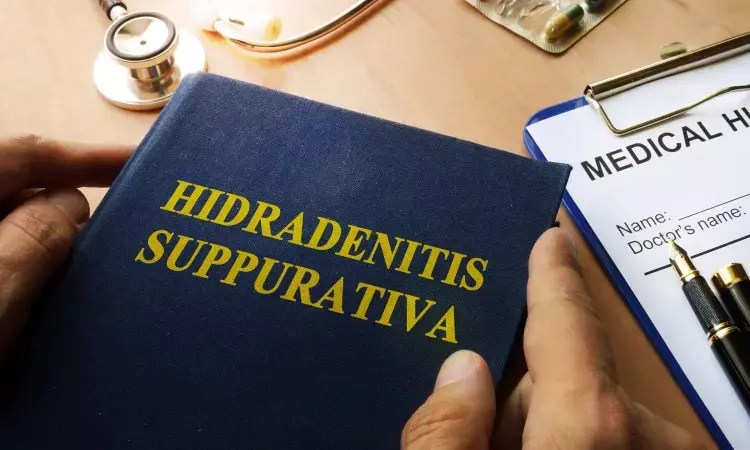- Home
- Medical news & Guidelines
- Anesthesiology
- Cardiology and CTVS
- Critical Care
- Dentistry
- Dermatology
- Diabetes and Endocrinology
- ENT
- Gastroenterology
- Medicine
- Nephrology
- Neurology
- Obstretics-Gynaecology
- Oncology
- Ophthalmology
- Orthopaedics
- Pediatrics-Neonatology
- Psychiatry
- Pulmonology
- Radiology
- Surgery
- Urology
- Laboratory Medicine
- Diet
- Nursing
- Paramedical
- Physiotherapy
- Health news
- Fact Check
- Bone Health Fact Check
- Brain Health Fact Check
- Cancer Related Fact Check
- Child Care Fact Check
- Dental and oral health fact check
- Diabetes and metabolic health fact check
- Diet and Nutrition Fact Check
- Eye and ENT Care Fact Check
- Fitness fact check
- Gut health fact check
- Heart health fact check
- Kidney health fact check
- Medical education fact check
- Men's health fact check
- Respiratory fact check
- Skin and hair care fact check
- Vaccine and Immunization fact check
- Women's health fact check
- AYUSH
- State News
- Andaman and Nicobar Islands
- Andhra Pradesh
- Arunachal Pradesh
- Assam
- Bihar
- Chandigarh
- Chattisgarh
- Dadra and Nagar Haveli
- Daman and Diu
- Delhi
- Goa
- Gujarat
- Haryana
- Himachal Pradesh
- Jammu & Kashmir
- Jharkhand
- Karnataka
- Kerala
- Ladakh
- Lakshadweep
- Madhya Pradesh
- Maharashtra
- Manipur
- Meghalaya
- Mizoram
- Nagaland
- Odisha
- Puducherry
- Punjab
- Rajasthan
- Sikkim
- Tamil Nadu
- Telangana
- Tripura
- Uttar Pradesh
- Uttrakhand
- West Bengal
- Medical Education
- Industry
Combined IPL and Radiofrequency Therapy Improves Outcomes in Hidradenitis Suppurativa: Study

Adding intense pulsed light (IPL) and radiofrequency irradiation to standard treatment significantly enhances skin improvement in patients with hidradenitis suppurativa, making the combination therapy markedly more effective than non-radiation approaches.
The standard treatment for chronic and painful skin damage in people with mild to moderate hidradenitis suppurativa is initially topical application of anti-inflammatory and antibiotic ointments. On behalf of the Federal Joint Committee (G-BA) in Germany, the Institute for Quality and Efficiency in Health Care (IQWiG) investigated the advantages and disadvantages of irradiating inflamed skin with a combination of intense pulsed light and radiofrequency, in addition to topical antibiotic therapy.
IQWiG's conclusion is based on the results of a high-quality randomized trial: Patients with Stage I and II hidradenitis suppurativa (according to the Hurley score) benefit from combination therapy consisting of topical antibiotic therapy plus skin irradiation, as this is substantially more effective at improving deep and extensive skin damage caused by inflammation or purulent abscesses than topical antibiotic therapy alone.
The primary treatment goal can thus be better achieved with combination therapy than with antibiotic monotherapy. The study results for other endpoints such as anxiety, depression, pain and health-related quality of life showed no relevant differences between the two treatment groups. Although there were statistically small differences in favour of additional skin irradiation in terms of pain and quality of life, these were too small to be considered regularly perceptible and therefore relevant. Temporary side effects such as redness, swelling or itching of the treated skin occasionally occurred after skin irradiation, but these were not serious.
Chronic condition with a high disease burden
Hidradenitis suppurativa (also known as acne inversa) is a chronic skin condition that causes inflammation of the hair follicles or sebaceous glands, resulting in painful, pus-filled nodules that can develop into larger abscesses. This skin disease can spread to large areas of the body, particularly the armpits and groin, as well as the genital and anal regions. Because the inflammation of the skin often makes any movement in the hip and shoulder joints painful, affected patients can experience severe restrictions in their everyday lives.
Relieving skin damage and pain through treatment and the resulting improvement in quality of life are a priority for patients. This was confirmed in discussions with patients conducted by IQWiG in order to obtain information from the patient perspective for the benefit assessment. Therefore, treating symptoms for a few weeks appears to be insufficient for a lifelong and debilitating condition. However, it remains unclear whether continuous maintenance therapy with radiation (also without the concomitant administration of antibiotics) offers any advantages, as the relevant study only permits a comparison over a period of 16 weeks. After this time, all patients were able to receive the same treatments. Furthermore, the necessity of skin surgery, which can be very stressful for patients, could not be assessed based on the available study data.
Dr Kamal Kant Kohli-MBBS, DTCD- a chest specialist with more than 30 years of practice and a flair for writing clinical articles, Dr Kamal Kant Kohli joined Medical Dialogues as a Chief Editor of Medical News. Besides writing articles, as an editor, he proofreads and verifies all the medical content published on Medical Dialogues including those coming from journals, studies,medical conferences,guidelines etc. Email: drkohli@medicaldialogues.in. Contact no. 011-43720751


